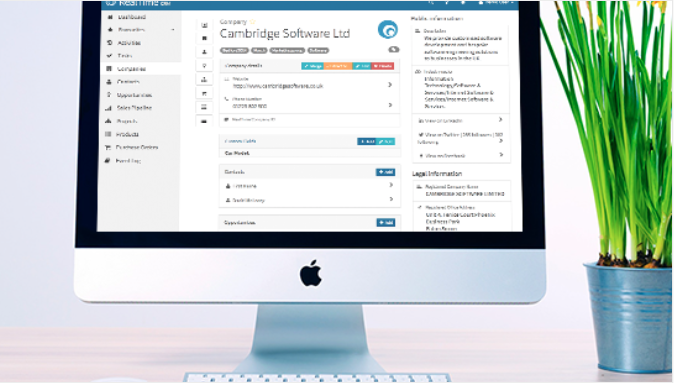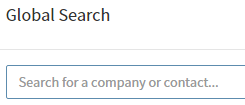Why you should be using a CRM – Part 1
Feb 5, 2016
Using Excel as a CRM (or indeed any spreadsheet program) may be great at the moment while your business is still small and you don’t have a lot of clients. But how are you going to deal with all that information when your business starts to grow and your client base expands.
I understand that for small businesses extra expenses can be a pain but I am going to explain in this two part blog why that extra expense could be a real asset to your business and ditching the idea of using Excel as a CRM may save you time and money in the long run.
Using Excel as a CRM gives you poor visibility of what’s going on in your business
Do you struggle to see what’s going on in your company? And struggle to seeing who’s done what?
 Working with spreadsheets can make it hard to know who said what giving you a lack of visibility into what is happening in your company. You don’t want to be spending time trying to find out who said what and what’s been done, you want the data to be there for you to see. With spreadsheets you don’t get a real time view of everything that is happening in your business.
Working with spreadsheets can make it hard to know who said what giving you a lack of visibility into what is happening in your company. You don’t want to be spending time trying to find out who said what and what’s been done, you want the data to be there for you to see. With spreadsheets you don’t get a real time view of everything that is happening in your business.
With a CRM systems you can see the activity that’s been going on, giving you that visibility you need when running a business. CRM systems also allow you to easily access the information you need while on the go from mobile devices.
It takes ages to find the data you want in your spreadsheets
Do you have to go searching for the data you need as It’s not just there for you to see?
 When using Excel as a CRM you may find yourself juggling your data in different documents and it can be hard to quickly find the data you want. These are not things you want to be spending your time on when you are running a business, you want to be spending that time communicating with your customers not struggling to find their information.
When using Excel as a CRM you may find yourself juggling your data in different documents and it can be hard to quickly find the data you want. These are not things you want to be spending your time on when you are running a business, you want to be spending that time communicating with your customers not struggling to find their information.
With a CRM you can easily find the data you want, they have search bars which allow you to filter your data so you can find what you want to without the hassle of searching through all your data.
Spreadsheets are never 100% up to date.
Are you struggling to know if the data you are looking at is up to date?
Don’t have time to enter all the data to your spreadsheets? So you’re not entering all the data you gathered? You spend time trying to find the information you want then you are constantly spending more time trying to figure out if the information you are looking at is up to date. These are often side-effects of using Excel as a CRM and could cause you to lose a customer as you don’t have the correct information or know that they have already been contacted. This can also cause a negative impact on your business as customers will see that you are not keeping track of everything going on.
Use a CRM system to stop this, it’s quick and easy to enter and change data allowing your staff to keep up to date with what’s been done.
Locating the data you want is never easy with spreadsheets
Does it take you ages to try and find the data you want? I can imagine it being a daunting task having to search through different spreadsheets to find the information you want.
Is your data all over the place? This can cause problems as people don’t know where to find the data they need. Data is not added as staff members don’t have the time, so they leave it and then other people are not notified of things, which can cause double contacting.
Are members of your team entering data differently?
When members of staff enter data differently it can cause problems as the data you want is not where you think it is meaning you have to waste time trying to find it or having to ask people where you can find the data.
Having a CRM can solve these issues. CRM’s allow you to have all of your data in one place, allowing you to quickly find and enter the data you want. Also your staff will enter data via forms so people won’t be entering data differently.
Forgetting about tasks is easy when using Excel as a CRM
Do you easily forget about tasks? With spreadsheets as your form of data storage it’s easy to forget about things while entering data.
Say you take a call from a potential customer and they say they aren’t interested now but in a few months that is something they will be interested in. You then need to remember to call them back, how are you going to remember this from the data on your spreadsheet?
With a CRM you can easily add tasks with reminders so you don’t have to remember, your CRM will tell you when it’s time to call people back.
That’s all for Part 1
Check out part 2 of this article where we will be talking about; customer interaction, wasted time on data entry, getting your business ready for the future and how easy it is to move your data to a CRM. In the meantime, why not take a free test drive of RealTimeCRM and see if it will help you to overcome some of the challenges we’ve listed above.